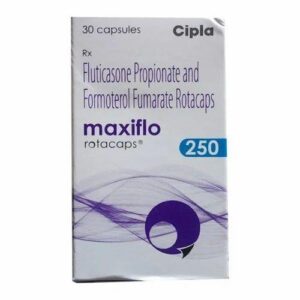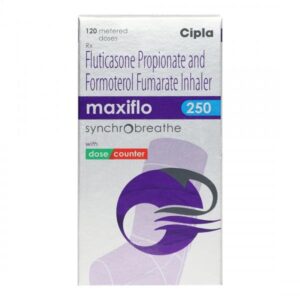MUPIROCIN + FLUTICASONE PROP
Mupirocin: Mupirocin is a topical antibiotic used to treat skin infections caused by bacteria. It is commonly used to treat impetigo, a contagious skin infection that causes red sores and crusting, as well as other skin infections caused by Staphylococcus aureus or Streptococcus pyogenes.
The mechanism of action of mupirocin involves inhibiting bacterial protein synthesis. It specifically targets an enzyme called isoleucyl-tRNA synthetase, which is necessary for bacteria to produce proteins. By inhibiting this enzyme, mupirocin prevents bacteria from synthesizing essential proteins, effectively killing or inhibiting their growth.
Mupirocin is usually available as an ointment or cream and should be applied directly to the affected area of the skin. The exact dose and duration of treatment will depend on the severity and type of infection being treated. It is important to follow the instructions provided by the healthcare provider or the product label.
While mupirocin is generally well-tolerated, it may cause some side effects. The most common side effects include burning, stinging, itching, or skin rash at the application site. These side effects are usually mild and temporary. However, if severe side effects occur such as severe skin irritation or allergic reactions, medical attention should be sought immediately.
It is important to note that mupirocin is not intended for internal use or to treat systemic infections. It should only be used externally on the skin as directed by a healthcare professional. Additionally, it is essential to complete the full course of treatment to ensure the infection is completely eradicated.
Fluticasone Prop: Fluticasone propionate, commonly known as Fluticasone Prop, is a synthetic corticosteroid medication used mainly to treat symptoms of asthma and allergic rhinitis.
The drug works by reducing inflammation and swelling in the airways, making it easier to breathe. Fluticasone Prop binds to glucocorticoid receptors in the respiratory system, thereby inhibiting the production and release of various inflammatory substances. This helps to control symptoms such as wheezing, shortness of breath, coughing, and congestion.
For asthma treatment, Fluticasone Prop is usually administered through an inhaler device. The recommended dose varies depending on the severity of the condition and the specific inhaler device prescribed. It is important to follow the instructions provided by the healthcare professional.
For allergic rhinitis, Fluticasone Prop is commonly available as a nasal spray. The usual dose is 1-2 sprays in each nostril daily. Again, it is crucial to adhere to the prescribed dosage and instructions.
Although Fluticasone Prop is generally safe and well-tolerated, like any medication, it can have side effects. Common side effects may include nasal irritation, nasal bleeding, headache, and sore throat when using the nasal spray form. When using the inhaler, side effects may include throat irritation, hoarseness, and cough.
Less common side effects of Fluticasone Prop may include nasal septum perforation, fungal infection in the mouth (thrush), slowed growth in children, osteoporosis with long-term use, and adrenal insufficiency in rare cases.
It is important to consult with a healthcare professional before using Fluticasone Prop, especially if there is a history of certain conditions like glaucoma, cataracts, tuberculosis, or any infection. Additionally, it is necessary to disclose all other medications being taken to prevent any potential drug interactions.
Fluticasone Prop is a prescription medication, and its use should be under the guidance of a healthcare professional to ensure safe and effective treatment. The information provided here is just a general overview, and specific instructions may vary depending on the individual’s condition and medical history.


